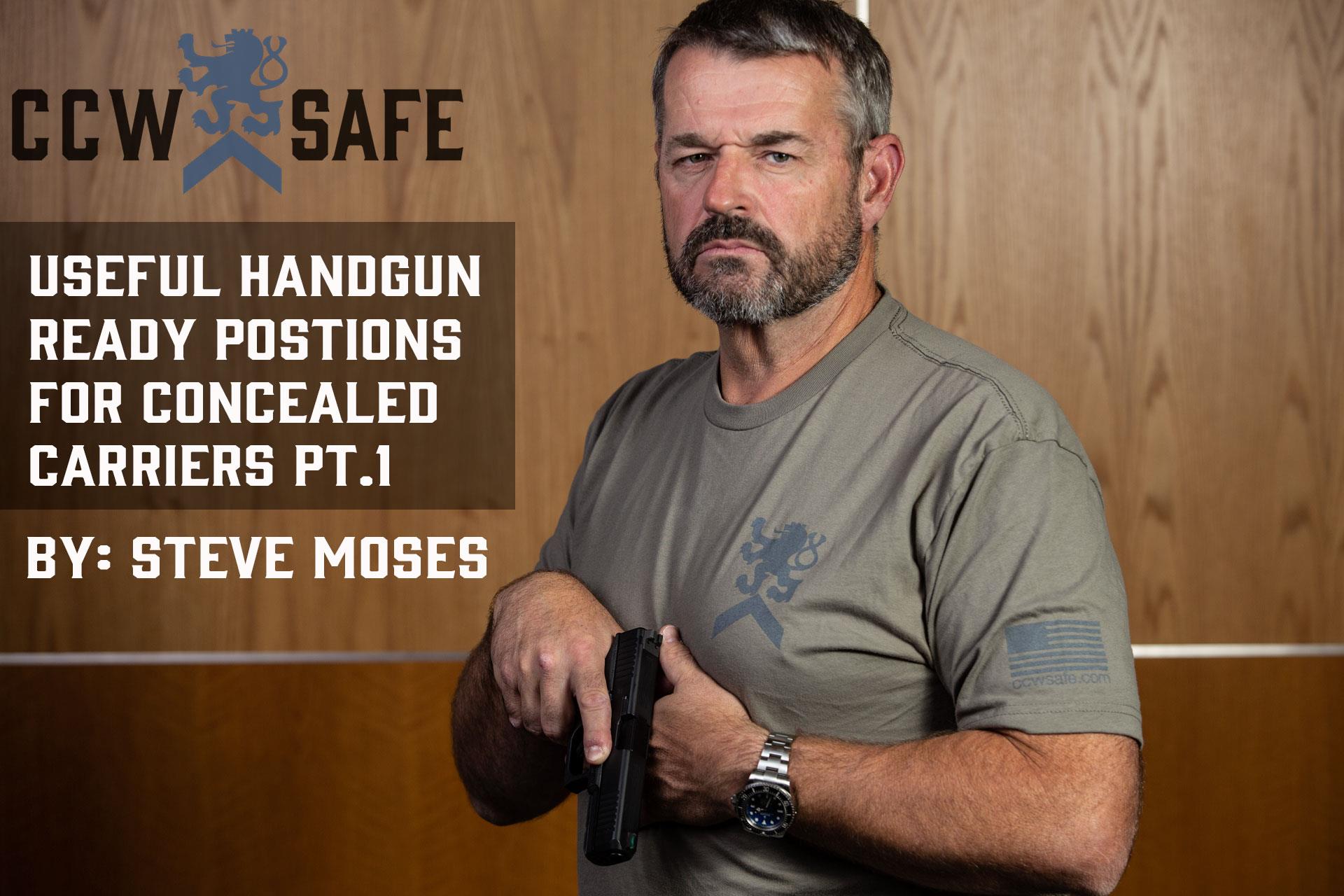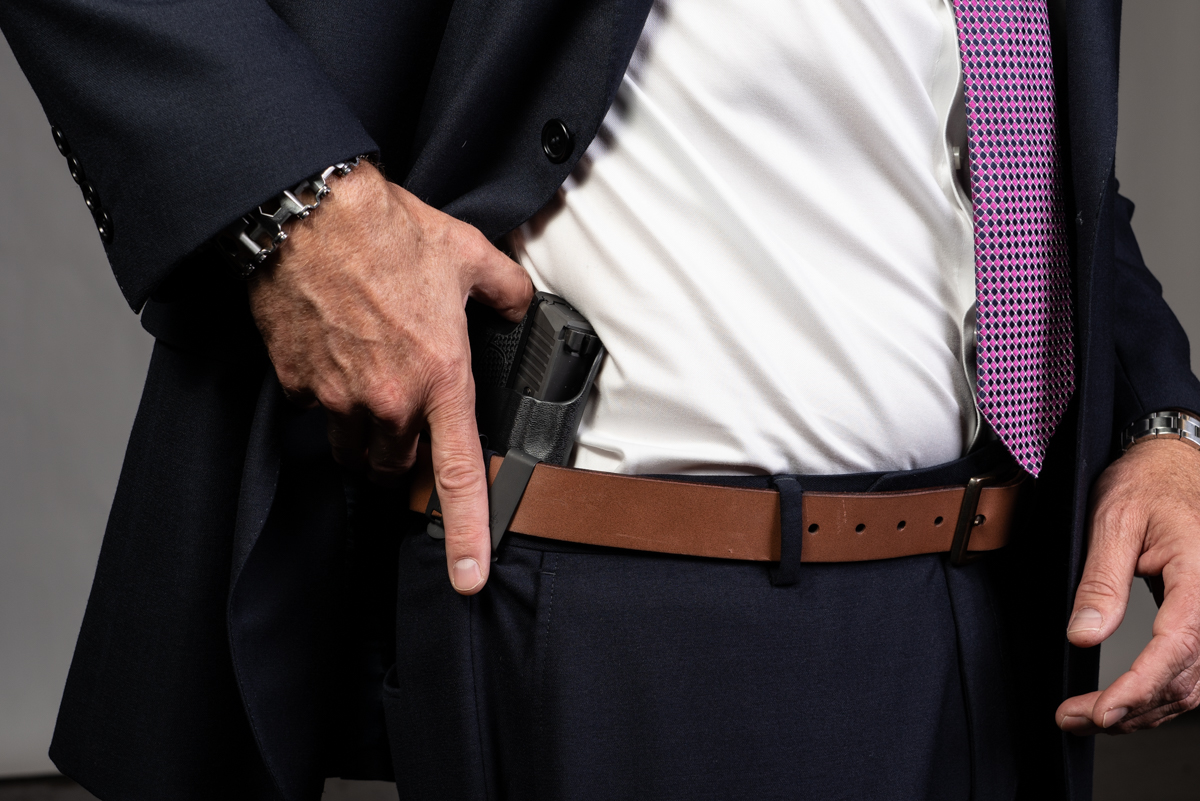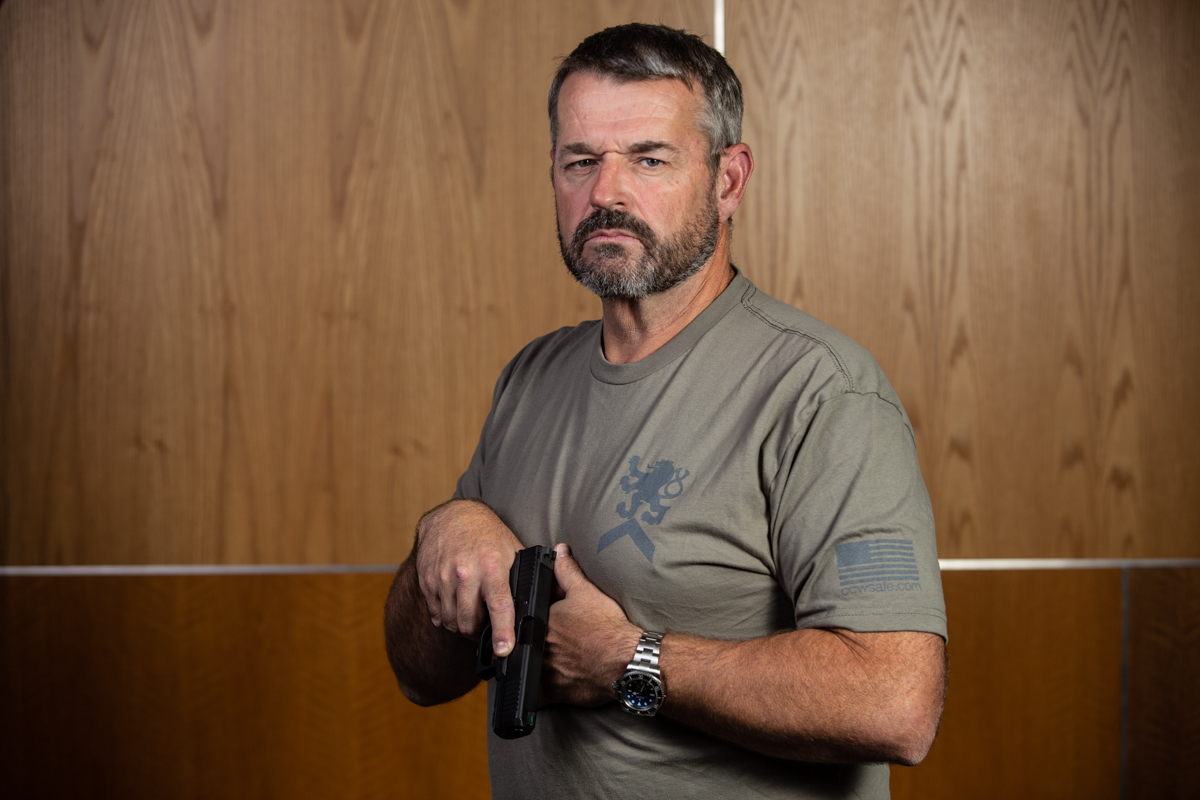
Posted on December 21, 2020
USEFUL HANDGUN READY POSITIONS FOR CONCEALED CARRIERS
USEFUL HANDGUN READY POSITIONS FOR CONCEALED CARRIERS
Members of CCW Safe have diverse backgrounds that range from brand-new gunowners to highly trained law enforcement officers on the municipal, county, state, and federal levels to some of the best defensive firearm trainers in the industry. I know for a fact that a number of them are former military with backgrounds in special operations and combat experience, and it would not surprise me if there are some that are currently active. Hopefully, this particular article on multiple handgun ready positions has something for all of those members. It might be the first time that a new gun-owner has been exposed to any of the ready positions commonly used with a defensive handgun other than what they may have seen on television or in the movies, or perhaps an experienced concealed carrier would like to have on hand an organized list of ready positions that can be shared with others who are new to concealed carry.
A solid ready position can increase the speed at which a concealed carrier can deploy his or her handgun and use it effectively, reduce the risk of negligently shooting others due to the increased focus on the orientation of the muzzle, and in some instances stop a potential attack due to the competent manner in which the intended victim handled their defensive firearm.
For the purpose of this article, I am only going to identify the following ready positions by one of their more common names, provide a brief description, and furnish at least one reason that I believe each might be applicable to a specific scenario. The order in which I have set them out is lower-profile (more covert/less aggressive) to higher-profile (more overt/more aggressive). My choice would always be the lowest-profile ready position that will would still allow me to quickly get the handgun into play. I encourage readers to search the internet for more detailed information on any or all of the ready positions discussed in this article. There is a lot of good material out there written by highly respected firearm trainers who can describe in good detail the nuances of a specific position and any pros and cons that they may have observed. One unshakeable absolute with each of these ready positions is that the concealed carrier must always keep their trigger finger straight and along the side the frame above the trigger guard or on the slide itself (higher is better).
- HOLSTERED READY: The concealed carrier establishes a dominant hand-only firing grip on the handgun but does not remove the handgun from the holster. This can be done slowly and discretely by angling the body so as to escape attention or done rapidly in order to constitute a lawful defensive display if situationally appropriate. Advantages to this position are that the muzzle remains oriented in a safe position, the trigger guard is covered, and what is probably the slowest portion of the draw stroke has already been completed.

Holstered Ready Position
- COVERT READY: The concealed carrier draws the handgun and holds it behind him or her with the muzzle oriented towards the floor. I turn my palm outwards and press the back of my hand against my right rear pocket (I am right-handed) so as to establish a repeatable index and create a slight offset of the muzzle away from the back of my legs and feet. I might use this position inside my house if there was someone outside on the other side of the door that I had concerns about. Law enforcement officers working patrol sometimes assume this position during high-risk traffic stops when approaching a stopped vehicle if they have reason to believe that the persons inside it might be dangerous.
- SUL: Position Sul is my personal default position unless there is good reason not to use it. In Position Sul, I simply collapse my hands inward on my chest (gun-bearing hand on top) while keeping the pad of my dominant hand thumb in contact with the pad of my support hand thumb. The inside of the slide will be pressed against the knuckles of my support hand so that the muzzle points downward and just forward of my feet. I can readily control the orientation of the muzzle so that even if I am in close proximity to other household members or friends and they are moving around the chances that I will inadvertently flash one of them with my muzzle are low. One mistake concealed carriers make with this position is to let the muzzle drift right or left, which can endanger persons standing off to the side. Having said that, I would not use this position while confronting a potentially dangerous individual, most especially at close distances. I do not believe that this position is structurally strong and might be concerned that both of my hands might get pinned to my chest if I were caught off-guard and rushed.

Position Sul
Part Two of this article covers three additional ready positions that might be of use to concealed carriers and discusses the importance of managing distance when a defensive handgun has come into play, why non-verbal body language is never more important than when a handgun is no longer holstered, and why the concealed carrier needs to fully process what is going on around him or her as they alone bear the ultimate responsibility for always selecting the most applicable ready position and using it correctly.
 |
Steve MosesSteve Moses has been a defensive firearms trainer for over 26 years and is a licensed Texas Personal Protection Officer with 7 years of experience performing as shift lead on a church security detail for a D/FW area metro-church. Steve is a co-owner and Director of Training for Palisade Training Group, LLC based in Dallas, Texas. Moses is a retired deputy constable and spent over 10 years on a multi-precinct Special Response Team. He owns multiple instructor certifications, including Rangemaster Advanced Handgun Instructor and Defensive Shotgun Instructor, Red Zone Knife Defense Instructor and Adaptive Striking Foundations Instructor, Modern Samurai Project Red Dot Sight Instructor, and State of Texas Personal Protection Officer Instructor. Steve holds a BJJ Brown Belt in Relson Gracie Jiu Jitsu. He is a content contributor for CCW Safe and writes weekly articles on various subjects of interest to concealed carriers. Moses shoots competitively and holds an IDPA Expert rating. Steve is an annual presenter at the Rangemaster Tactical Conference. |